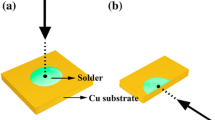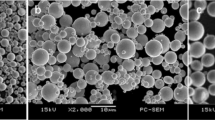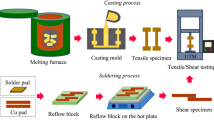Conclusions
-
1.
The mechanical properties of copper joints soldered with lead and PSr 7.5 solder at 850°C in vacuum remain unchanged with increasing cooling rates.
-
2.
When copper joints are soldered with tin and indium in vacuum an increase of the cooling rate reduces the hardness in the zone of fusion and increases the shear strength of the joint. The strength and ductility are highest at a cooling rate of 100 deg/sec.
-
3.
The formation of phases in cooling of soldered joints is similar to the formation of phases during solidification of alloys in large volumes. Changing the cooling rate can affect the crystallization process in the zone of fusion and the structure and properties of the joint.
Similar content being viewed by others
Literature cited
N. N. Prokhorov, Physical Processes in Metals during Welding [in Russian], Metallurgiya, Moscow (1968).
W. Tiller and G. Rutter, Canadian J. Phys.,34, No. 1 (1956).
Additional information
All-Union Correspondence Mechanical Engineering Institute. Translated from Metallovedenie i Termicheskaya Obrabotka Metallov, No. 6, pp. 57–58, June, 1970.
Rights and permissions
About this article
Cite this article
Shein, Y.F., Petrunin, I.E. Heat treatment of soldered copper joints. Met Sci Heat Treat 12, 509–511 (1970). https://doi.org/10.1007/BF00668864
Issue Date:
DOI: https://doi.org/10.1007/BF00668864




